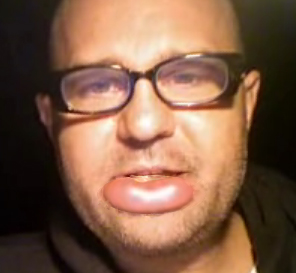California YouTube star Cory Williams, who is also known as Mr. Safety, reported to the New York Times that he is earning more than $200,000 annually by creating videos on YouTube (he said $17-$20K per month, so I took an average times 12).
“Half of the profits come from YouTube’s advertisements, and the other half come from sponsorships and product placements within his videos, a model that he has borrowed from traditional media,” Williams said.
Williams, who is known as Mr. Safety at his YouTube channel SMPFilms, said the income was a combination of YouTube Partner income and money he makes for sponsored videos. See “YouTube Videos Pull in Real Money” at the The New York Times (thanks Marilyn).
 Michael Buckley, who posts on YouTube as WhatTheBuck, won’t confide his earnings. But he said his hobby has changed his financial life…
Michael Buckley, who posts on YouTube as WhatTheBuck, won’t confide his earnings. But he said his hobby has changed his financial life…
The article quotes: “Mr. Buckley quit his day job in September after his online profits had greatly surpassed his salary as an administrative assistant for a music promotion company. His thrice-a-week online show “is silly,” he said, but it has helped him escape his credit-card debt.”
I feel so weird writing this post, because both of these guys are, like, BFFs. Well- they’d probably say acquaintances. But now instead of calling Cory “crazy,” I have to call him “eccentric” (which means crazy and rich). Buckley, however, hasn’t let the money go to his head. Occasionally he berates his minimim-wage assistant, Mason, but that’s fair. He’s under a lot of pressure.
Most of my 3-plus years watching this industry has been dedicated to helping video creators live off their work. And that can’t happen until marketers realize that, uh, these cats know how to “draw a crowd.” And crowds buy stuff. But this particular piece isn’t focused on the marketing whores.
Rather, this post is to warn aspiring video creators of a few things that may be missleading about this news. I don’t want people to have an unrealistic sense that they can quit their day jobs quite yet.
- First, these are video creators that are in the top single-digit percent of popularity. Almost any industry has a sharp pyramid, and online video is shaping up similarly. That means for every Buckley there are thousands maybe millions of people that are earning enough to cover maybe a few Starbucks coffees.
- These people have been at it for a while. Buckley’s success was “overnight” (less than a year), but Mr Safety has been doing this since his Jackass days and before he invented Post-It Notes.
- Remember ZeFrank? He’s working the late shift at Wendy’s now. Creators can DaxFlame out as fast as they can Fred. The audience can be cruel and shifty.
- $17-$20K a month is a lot of damned money. I’m trying to decide whether to rob Cory’s house or assume it’s a “white lie.” I still think the whole “I turned down SNL” is a white lie (like when you tell Grandma her creamed spinach is delicious), but then again… I’d think Cory was lying if he told me that Mean Kitty was about to have more subscribers than I. But check for yourself (I totally just vomited a little in my throat). Naturally, I gave Cory total crap when his “$20K a month “slipped out” on the Tyra Banks interview (see his “who told you?” quote). But his explanation was fair… A friend helped broker the interview, Cory told the friend stuff about recent earnings “off the record,” and that information turned up on the interview. Now it’s “out there” and I shant have a conversation with him without reminding him he should have voted for McCain for tax reasons alone.
- I do sponsored videos and I’m a YouTube Partner, and I’m not making anywhere near $17K a month. That day may come, but I feel like I’m worth more (and better differentiated) helping marketers tap this medium.
- There is no six. Piss off with your desperate need for a 6th on a list.
- Finally, remember “The Secret.” Money will come, but only if you affirm that you’re worth it and don’t get jealous of other people’s success. Even if they are making more than you are as a marketing director because they have a stupid cat that’s popular. 😉



